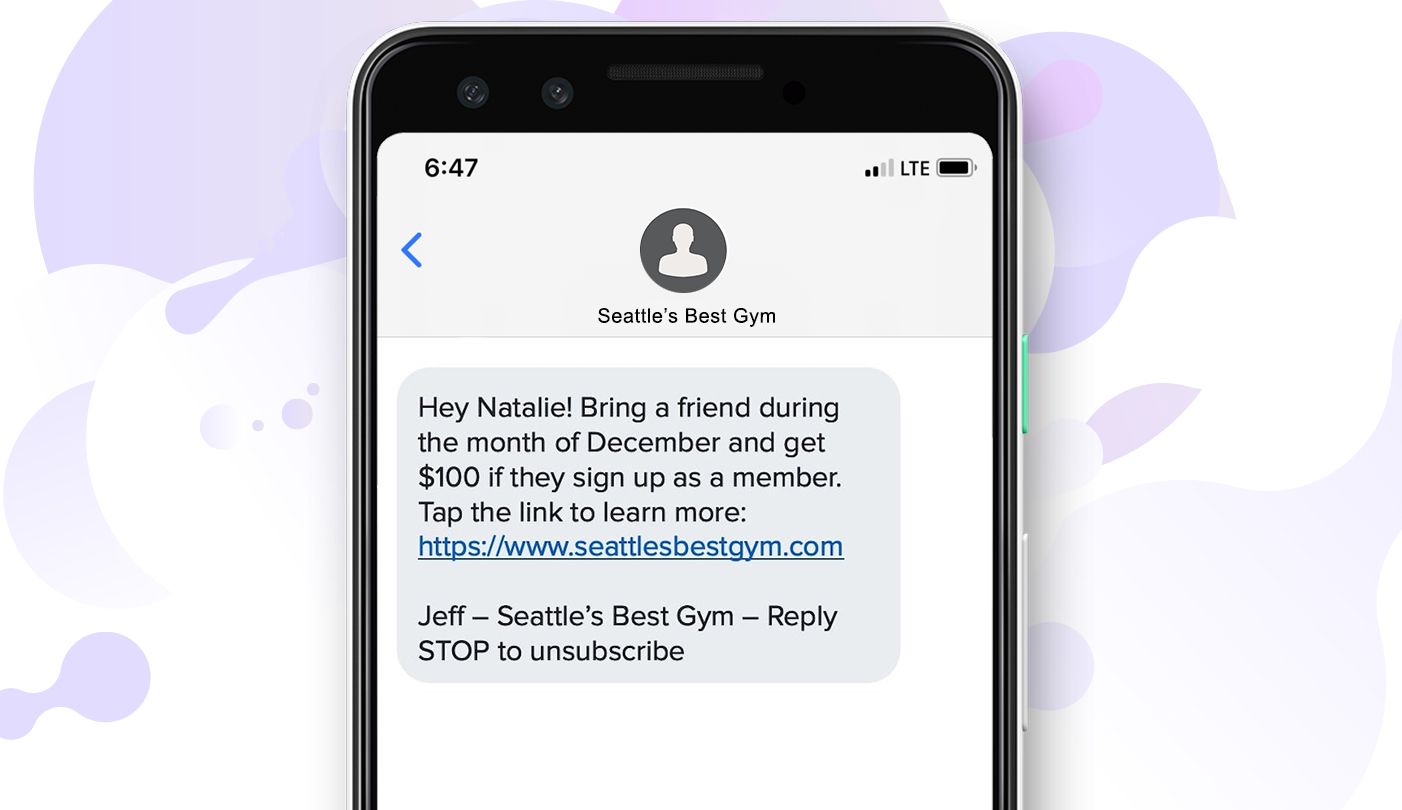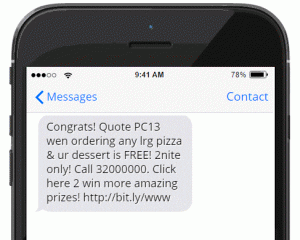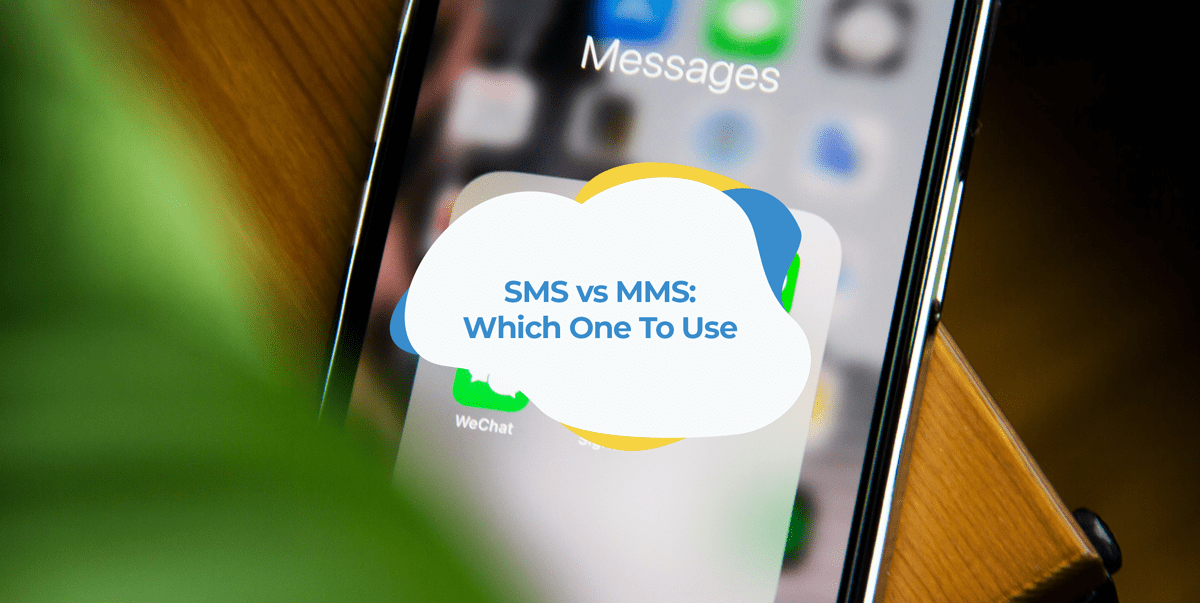SMS marketing has become an increasingly popular choice for many merchants over the past couple of years.
And it’s easy to see why.
A phenomenal 98% of SMS messages are opened (compared to roughly 20-25% for emails) and more than 60% of customers read an SMS marketing campaign within 5 minutes of receiving it.
This comes down to the unique qualities of SMS as a marketing channel.
It’s a highly intimate form of communication that lets you reach your customers quickly and directly without having your message drowned out by the noise like on social media.
But whether you’ve just been thinking about getting started with SMS marketing, or you’ve already been sending SMS campaigns, you might be thinking: what about MMS?
MMS was another popular form of communication along with SMS before instant messaging took over in the early 2000s.
And while SMS and MMS are very similar, there are some key differences between them. Which also have implications for your marketing strategy.
So in this article, we’ll take a look at what exactly is the difference between MMS and SMS, what the pros and cons of each one are, and when you might want to use one over the other in your marketing.
What is the difference between SMS and MMS?
To fully understand the difference between SMS and MMS, it’s worth reminding ourselves of what SMS is.
What is SMS?
SMS (short for Short Messaging Service) is a text messaging protocol that lets people send short messages (of up to 160 characters) between mobile phones over the cellular network.
Below is an example of an SMS campaign.

It differs from instant messaging applications like WhatsApp, WeChat, Facebook Messenger, etc. by not requiring an internet connection.
This means that when you send an SMS, you’re sending the message to a phone number.
So to send SMS messages to your customers they only need to have a mobile phone with an active number. In other words, they don’t need an account with any company like Facebook, or WhatsApp.
With 97% of Americans owning a mobile phone and just 69% using Facebook and 23% using WhatsApp, this makes SMS marketing a great way to reach all your customers.
What is MMS?
Now that we’re clear on what SMS is, what about MMS?
MMS stands for Multimedia Messaging Service.
While MMS uses the same technology as SMS (they both use cellular networks to send messages between phones), as the name suggests, MMS allows you to include a range of multimedia content with your message.
This multimedia content can include images, audio, video files, and GIFs.
In addition to this, MMS also supports up to 1,600 characters (ten times that of SMS) and multimedia content with filesizes of up to 500KB.
Here’s an example of an MMS campaign from SkinTe that includes an image and longer message.

So what is the difference between MMS and SMS?
It should now be pretty clear what the main difference between MMS and SMS is.
One lets you send short, basic text messages (SMS) and the other lets you send longer messages with more options (MMS).
Because of these additional options, MMS is also more expensive to send than a simple SMS message. Typically double the cost depending on which platform you’re using.
So to summarize:
- Character limits: SMS is limited to 160 characters while MMS lets you send up to 1,600 characters.
- Media: SMS only lets you send plain text (and links to webpages) while MMS supports rich media including images, audio, GIFs and even videos.
- Cost: Sending MMS messages costs more than sending SMS messages.

SMS and MMS marketing pros and cons: Which one should you use and when?
Okay, so now you know exactly what the differences between the two messaging services are. The question now becomes when should you use one over the other?
Both SMS and MMS are highly effective at reaching your customers quickly and directly.
When choosing between the two, in addition to the differences between them that we’ve already looked at, you should also consider the following:
- What is your budget? While MMS gives you more options and lets you send multimedia like images and videos, it’s also significantly more expensive.
- How long is your message? Can you fit your message within 160 characters or will you need the additional space MMS allows?
- What is the purpose of your message? Are you simply letting a customer know that an item they’ve enquired about is back in stock? Or are you sending a campaign to generate interest in your latest sale?
When to use SMS
SMS works best when you want to send a short, concise message to a large number of customers at once.

SMS is also the cost-effective option which makes it ideal if you want to message all your customers at once.
The other time when SMS will typically make more sense than MMS is with any kind of transactional message.
This includes order confirmations, shipping updates, payment reminders, appointment confirmations, letting a customer know an order is ready to pick up, etc.
These are all short, simple messages that can easily fit within the 160 character limit and don’t require any multimedia content like images.
When to use MMS
MMS, on the other hand, is a great option when you want to go the extra mile and make your campaigns particularly engaging.
The added capabilities of MMS messaging that lets you include images, videos, GIFs, etc. enables you to format your message so that it’s consistent with the look and feel of your brand.
You can do this by including your logo and utilizing your brand’s color scheme.
Because of this, MMS can also deliver significantly better results than SMS.
Compared to SMS, MMS:
- Has a 15% higher click-through rate
- Is 20% less likely to result in someone unsubscribing
- Is 4 times more likely to be shared on social media
While these are some impressive numbers, the downside is that MMS is also more expensive to send.
So unless you’re lucky enough to enjoy a generous marketing budget, it’s typically best to reserve MMS for the following types of messages:
Once-off automated campaigns
Automated messages are great in that they let you target the right customer with the right message at the right time.
And because they’re so highly targeted, you’re not constantly sending out the same automated message to lots of customers.
Take abandoned cart campaigns for instance.
This is a type of automated message that only sends when a customer has placed items in their cart but has not finished the checkout process.
Because these customers have displayed a clear purchase intent, quickly targeting them with a message to entice them to come back and complete their purchase is a great way to boost sales.
And because you won’t be sending large amounts of abandoned cart messages, when the situation arises you’ll want to increase the chances of conversion as much as you can by opting for MMS over SMS.
This is exactly what Homesick has done in their abandoned cart campaign below.

And it’s not just abandoned carts that are the only automations where it can be worth going the extra mile with MMS.
Win-back messages targeting once loyal customers who’ve stopped purchasing from your store and a good cross/upsell post-purchase campaign can all make the extra cost of MMS worthwhile.
Significant sales events
The extra cost of MMS can also be worth it any time you hold a significant sale.
We’re not talking about a simple 10% off for the long weekend type of sale though.
Think more like a jewelry store coming up to Valentine’s Day.
Valentine’s Day is likely going to be the biggest sales event of the year for jewelers. And because it’s also when lots of people will be looking to purchase jewelry, the extra cost of MMS is likely going to be worth the performance boost it gives the campaign.
Sign-up to our newsletter and receive a 30% discount on your first 6 months with SmartrMail
Conclusion
Both SMS and MMS are highly effective at reaching your customers quickly and directly with both enjoying phenomenal open rates.
They are also very similar in that they both work over cellular networks to deliver messages directly to people’s phones without the need for internet access.
At the end of the day, the key difference is that MMS gives you more options when it comes to the type of content you can send and how long your message is.
The tradeoff is that MMS is also more expensive to send.
That’s why we recommend reserving MMS for more lucrative opportunities so that the performance boost MMS gives is worth the extra cost.
Meanwhile, SMS makes for a much more cost-effective way of reaching a large number of customers at once and for simple, short transactional messages.
Whichever option you choose for your marketing, be sure to check out our comprehensive guide to SMS marketing.
And before you send your customers either an SMS or MMS, you’ll of course also need to have their consent.








